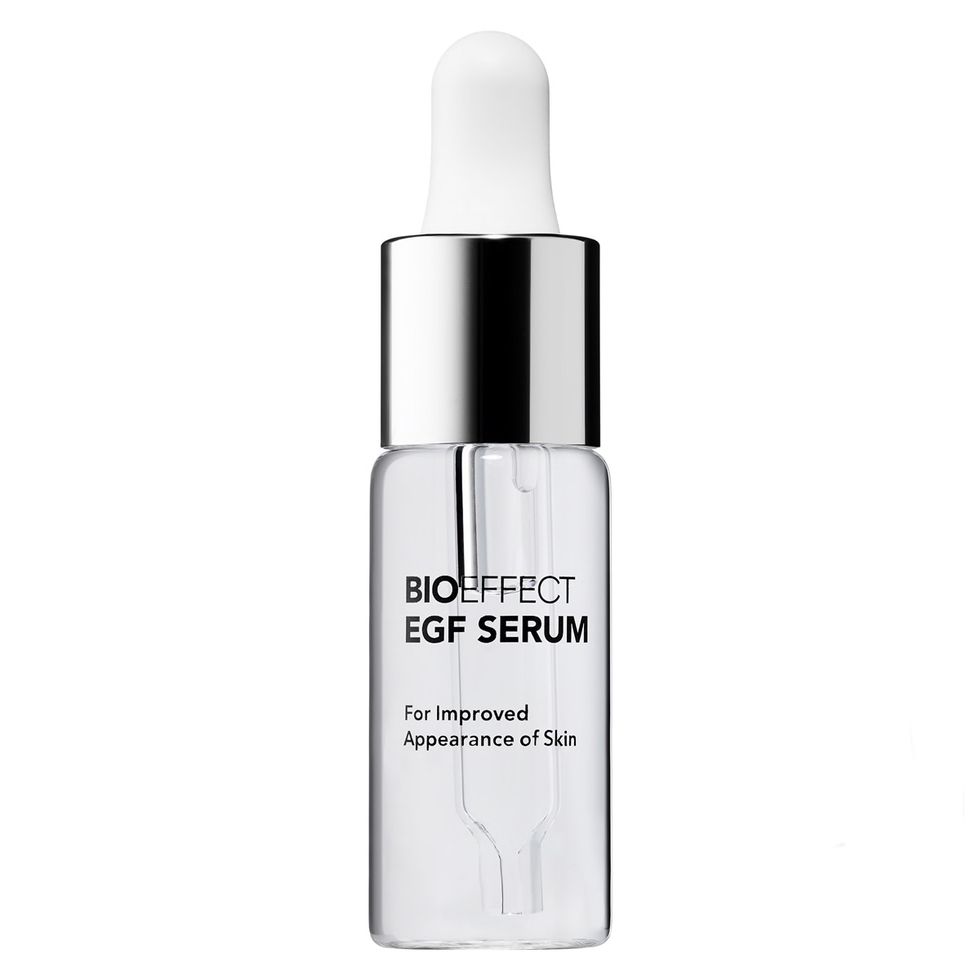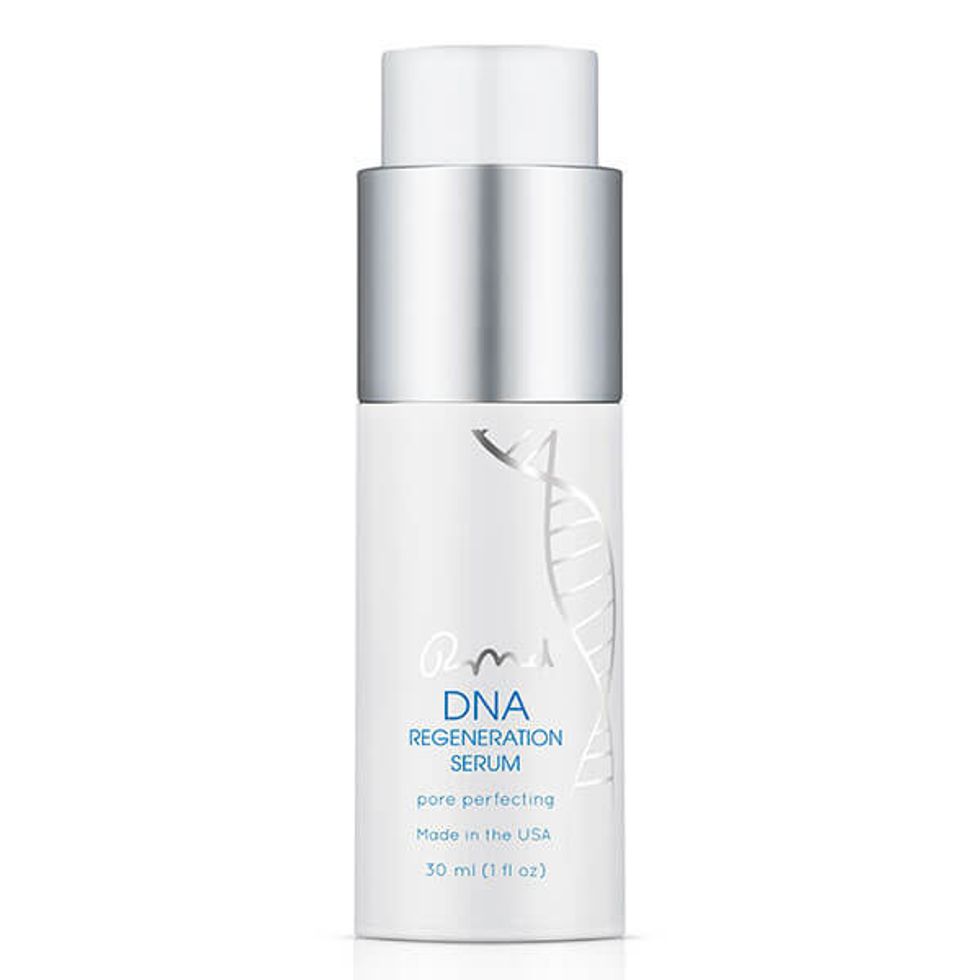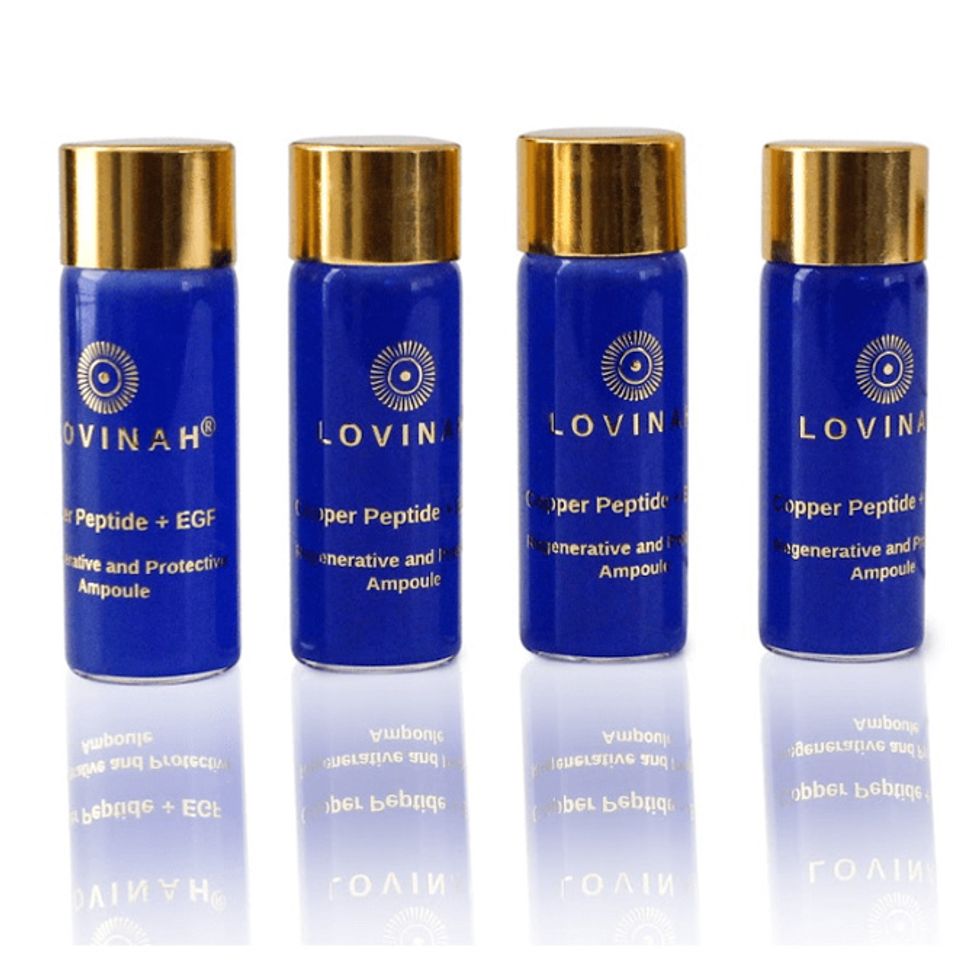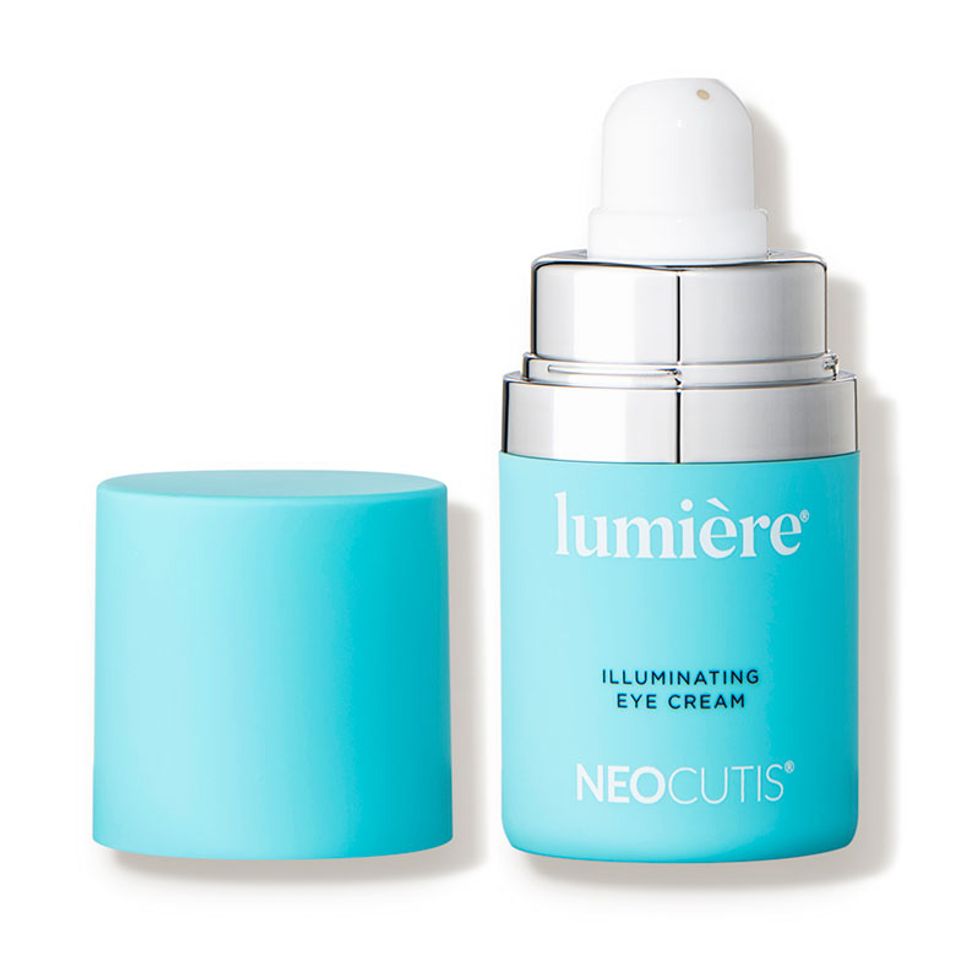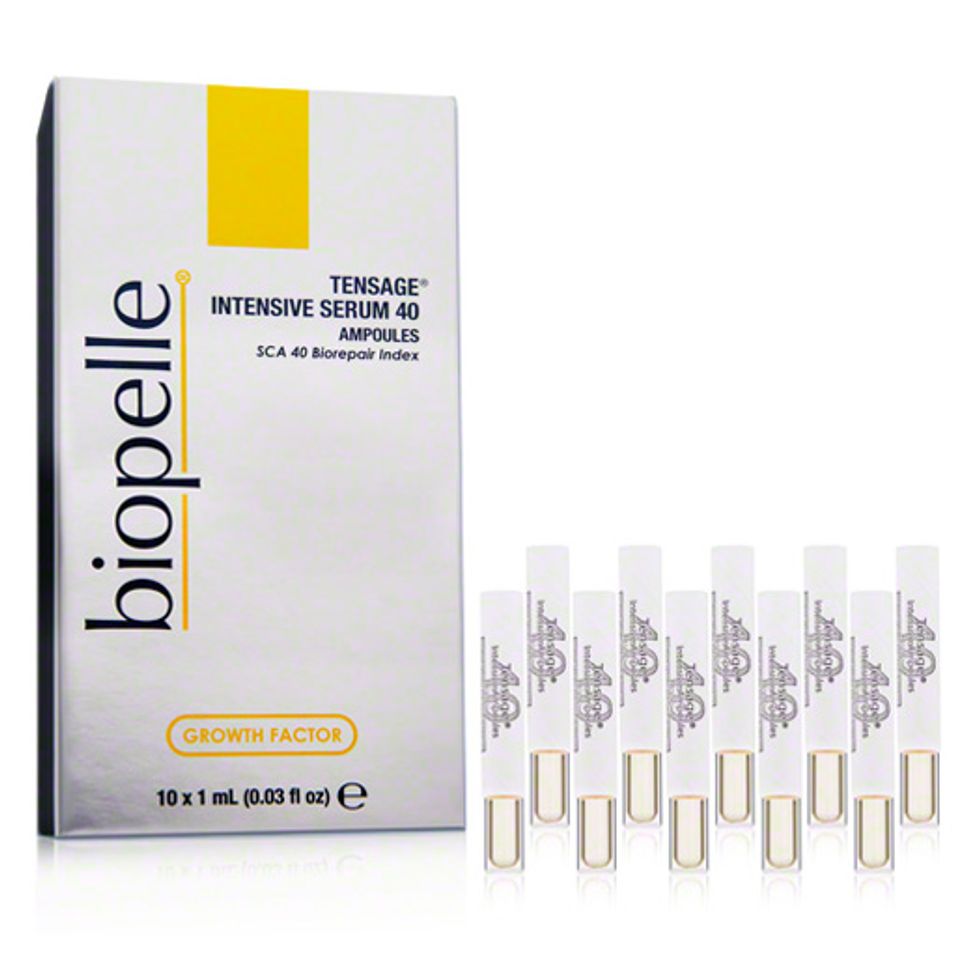Growth Factors and Retinol: The Key to Your Anti-aging Skin-Care Regimen
Science’s most powerful ingredients are better together.
21 September, 2020
Skin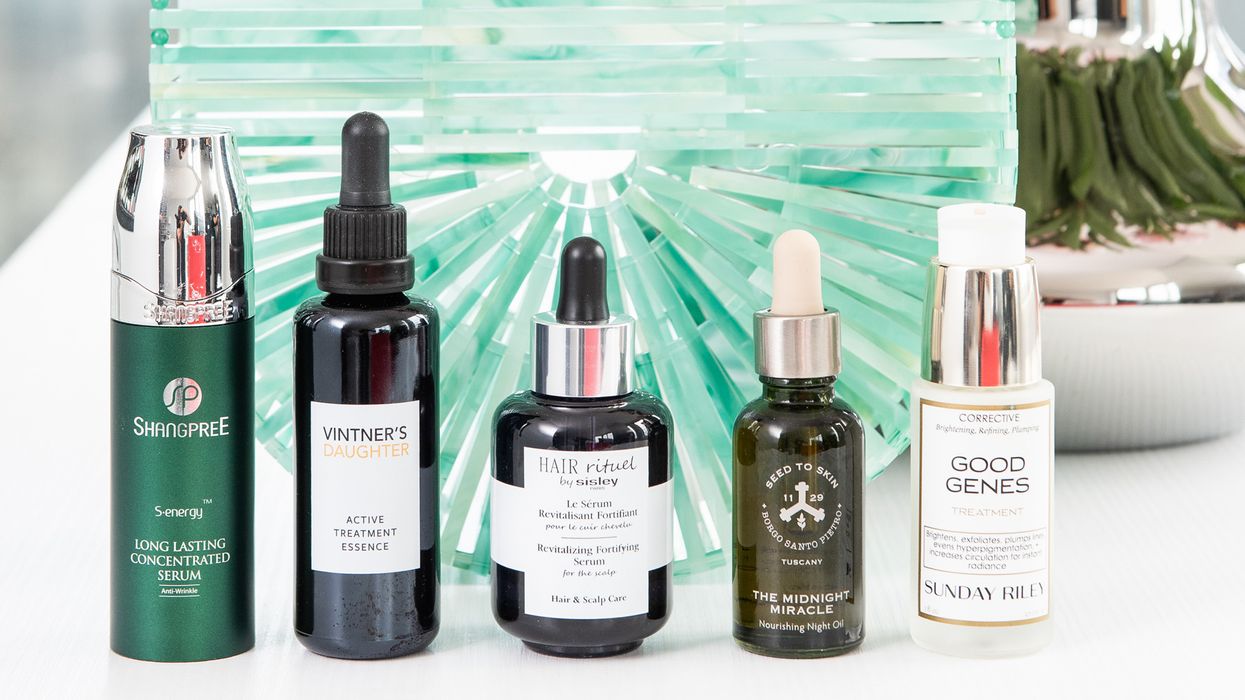
10 November, 2021
Every skin-care enthusiast has heard of retinol, the dermatological “gold standard” in anti-aging and vitamin A derivative that lessens the appearance of fine lines and wrinkles, promotes collagen production, minimizes breakouts, and resurfaces your skin. But the famed ingredient is also known for some of its less desirable side effects—namely, irritation, redness, flaking, and photosensitivity, which can make it intolerable for sensitive skin types and unsafe for use in pregnant and nursing women.
Even as most dermatologists laud retinol for its extensive benefits, holistic aestheticians remain wary of the active’s corrosive effects on the skin barrier. Because the skin barrier is key for retaining moisture and protecting the dermis from external irritants, aggressors, pollutants, and more, compromising it can sensitize skin, making it more susceptible to inflammation and irritation.
Growth factors have piqued our interest for being a sensitive-skin-friendly alternative to retinol, as these pro-healing proteins are safe for more continued use and are non-corrosive to the stratum corneum—the outermost layer of the epidermis—and are gentle enough for sensitive skin types. But if you’re not quite ready to let go of your retinol, it turns out that they can be used together to enhance the potency of your anti-aging regimen, even buffering the skin from some of retinol’s less desirable side effects.
Keep reading to get schooled on the use of growth factors in skin care according to dermatologists, and some guidance on whether the controversial ingredient could be right for you to try next.
Even as most dermatologists laud retinol for its extensive benefits, holistic aestheticians remain wary of the active’s corrosive effects on the skin barrier. Because the skin barrier is key for retaining moisture and protecting the dermis from external irritants, aggressors, pollutants, and more, compromising it can sensitize skin, making it more susceptible to inflammation and irritation.
Growth factors have piqued our interest for being a sensitive-skin-friendly alternative to retinol, as these pro-healing proteins are safe for more continued use and are non-corrosive to the stratum corneum—the outermost layer of the epidermis—and are gentle enough for sensitive skin types. But if you’re not quite ready to let go of your retinol, it turns out that they can be used together to enhance the potency of your anti-aging regimen, even buffering the skin from some of retinol’s less desirable side effects.
Keep reading to get schooled on the use of growth factors in skin care according to dermatologists, and some guidance on whether the controversial ingredient could be right for you to try next.
Growth Factor 101
As we grow older, our skin’s natural production of collagen decreases (starting around age 25), the elastin fibers begin to stiffen, and our skin produces lower quantities of growth factors, resulting in various signs of aging, like fine lines, crepiness, thinness, and sagging. This is where adding a topical growth factor into your routine can help. Says Lily Talakoub, MD, dermatologist and owner of dermtodoor.com, “A growth factor is a large protein derived from human cells that targets the crucial turnover of cells, [promoting the increase] of [structural proteins] such as collagen and elastin.”
Although they were first discovered in the 1950s—and the scientists who did it were awarded the Nobel Prize for their research in 1986—there was still some confusion as to how growth factors worked and their efficacy. But in the last few years, there has been a flurry of new anti-aging products that use growth factors like EGF (epidermal growth factor).
As Dr. Talakoub explains, growth factors stimulate the regeneration of cells that fight various signs of aging by prompting the cells to produce the structural components of the skin that are responsible for elasticity, firmness, and “bounce.” Specifically, ultra-healing EGF binds to the EGF receptor in the cell, aiding with cell proliferation, survival, and promoting DNA synthesis. By fortifying the presence of the structural tissues in the skin matrix, research shows that we can expect fewer fine lines and wrinkles over time. Think of growth factors as the key that unlocks and activates the cell to produce collagen and elastin—both of which give us that youthful look—and also help promote cell turnover and fight against inflammation.
As board-certified dermatologist Dr. Hadley King points out, growth factors like EGF can also be used to increase skin thickness and to improve tone and texture, particularly for sensitive skin types. “If your skin is too sensitive to tolerate retinoids, then growth factors can be a substitute to stimulate collagen, even tone, and decrease roughness with much less irritation.”
Dr. King explains that these proteins are almost universally tolerable, likely due to their natural presence in the body, and through inducing the body’s own natural mechanisms for repair, which in turn promotes skin healing. “When they bind to receptors on cell surfaces,” King continues, “they send commands to repair, rejuvenate, and replicate.” This makes them an excellent option for skin concerns ranging from inflammation and acne to fading scarring and post-inflammatory hyperpigmentation.
Coupling Growth Factors with In-Office Treatments
Thanks to the Kardashians, you’ve undoubtedly heard of the trendy “vampire facial,” which uses your body’s own PRP—platelet-rich plasma that is derived from your own blood—to treat acne scars and smooth skin texture. This makes them a fantastic addition to your post-laser or post-microneedling treatment at the dermatologist. Adding a growth factor serum like PRP can also enhance the efficacy of the treatment, as well as reduce healing time.
While a PRP serum created in a centrifuge from your own blood is the ultimate way to go for an in-office encounter with growth factors, you can also follow up at home with a growth-factor-based serum to maximize your treatment’s effects. Just be sure to perform a patch test before applying it to the area that was treated, as that skin might still be extra sensitive and prone to inflammation.
Bio vs. Phyto Growth Factor
One of the most important things to consider when selecting a growth factor comes down to the source. When we think of epidermal growth factor (EGF), there are two common methods of sourcing: bio (i.e., human- or animal-derived) and phyto (i.e., plant-derived). The general consensus within the scientific community seems to be that human-derived growth factors, especially PRP, are the most effective. Says Dr. Talakoub, “Plant-based growth factors do not stimulate the growth of in vivo cells [in] the same [way] as ones derived from human cells.”
However, not everyone is comfortable using a biological source for their skin-care products, even if they might deliver superior results. In products like the wildly popular growth-factor-based serums from SkinMedica and NeoCutis, the initial cell samples were obtained from neonatal fetal foreskin and fetal fibroblast cells, respectively, before being grown in the lab for use in their products. Depending on your ethical and political views, this might be an issue to consider before you try using these types of formulas.
And while these “holy grail” serums do use human stem cells, keep in mind that there are no body parts—we repeat, absolutely no penises!—in these serums, despite what Cate Blanchett says.
If you’d rather bypass the ethical controversy of a human- or animal-derived growth factor altogether, rest assured that there are plant-based options. “There are some engineered options that have been well tested and shown to be effective,” says Dr. King, noting that the brands BIOEFFECT and DNA Renewal have both exhibited promising results related to skin repair, rejuvenation, and enhancement via a humanlike epidermal growth factor made in bio-engineered barley seeds.
Dr. Björn Örvar, co-founder and chief scientific officer of BIOEFFECT, the makers of the world’s first bio-engineered, plant-based EGF, strongly believes that phyto-EGF is the new frontier in terms of tolerability, efficacy, and even safety. “EGF has previously been grown in bacteria, which poses a risk of endotoxins, or extracted from human or animal cells, which presents ethical, moral, and legal issues as well as safety issues.”
There are also upsides to selecting a phyto-sourced, synthetic EGF that go beyond ethics and speak to precision and measurable outcomes. “The advantage to plant-derived growth factors is that there is a more defined concentration of known synthetic growth factors, and so it is theoretically easier to measure and predict outcomes,” says dermatologist Dr. Mamina Turegano. And now with studies pointing to phyto sources of growth factor improving epidermal thickness—which thins as we age—these phyto-sourced options could be the new frontier in terms of bypassing the controversy altogether.
Growth Factors: How to Use Them in Your Regimen
Because these two anti-aging actives work differently, with retinol promoting the turnover of keratinocytes (the primary type of cell in your epidermis) and growth factors targeting the formation of cells that produce collagen and elastin and strengthening your skin barrier, EGF and retinol can be used together to maximize your anti-aging skin-care routine.
So what happens when you use a growth factor along with a retinol product? “Most growth factors are extremely large proteins [which] have a very difficult time penetrating the outer lipid bilayer of the skin,” says Talakoub. “Using a retinoid in combination with a growth factor allows [it] to penetrate the outer layers of the skin.” She suggests using a vitamin C product during the daytime, and then layering your EGF with your retinol at night to see the best results.
If you do choose to use an EGF serum in conjunction with your favorite retinol, Örvar recommends a particular process. “We recommend always applying the EGF serum first, on clean skin, and allowing 5–10 minutes before applying anything else on top [to] give it time to activate the skin cells and do its magic,” he notes. As he explains, EGF will help to boost hydration and counter the thinning of the skin’s outer layer that can occur with retinol. Their synergistic effects are the perfect complement to each other and will help make your anti-aging skin-care routine even more effective.
